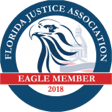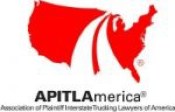What should have been routine train trip through the Washington-New York corridor the Tuesday night before last turned into a night of horror for the 238 passengers and 5 crew of Amtrak Northeast Regional Train 188. According to passengers, the initially uneventful journey quickly turned to catastrophe when luggage, electronics and even people started flying around the train cars. The reason for that chaos? While the investigation is ongoing, it is known that the train attempted a left turn at a rate of speed more than twice than the speed limit for that area. It is also known that after that attempt, all 7 cars of the train flipped and the engine derailed.
Indeed, initial reports indicate that the train was traveling at a whopping 106 mph heading into that turn in Philadelphia (although the speed limit right before the turn was only 50 mph), and that the engineer of the train applied full emergency brakes just moments before the train derailed.
The losses as a result of this crash are tragic. As of Wednesday evening, seven people are dead and at least 200 have been treated for injuries at area hospitals. Eight of the 200 being treated are in critical condition. What’s worse, officials state that not every passenger on the manifest has been accounted for, so there may be more victims.
National Transportation Safety Board member Robert Sumwalt stated that an investigation is ongoing to determine the cause of the derailment. The investigation will examine the train, the condition of the track, signals, and human performance. Although comments are swirling about the probable negligence of the engineer, NTSB indicated that even if speed caused the crash, the engineer may not be at fault. A mechanical issue, such as defective brakes, could have caused the crash.
Needless to say, once the investigation surrounding the cause of this crash is concluded, likely Amtrak’s troubles will be far from over. As a result of the injured persons and deaths, Amtrak may face a number of lawsuits.
Train systems are no stranger to wrongful death and personal injury suits arising from negligence occurring on their tracks. In 2012, the transit agency in charge of the D.C.-area Metro settled seven of nine lawsuits by families of people killed in a 2009 train crash, which happened to be the deadliest accident in that provider’s history. The accident occurred when one car slammed into a stopped one. Investigators there determined the crash was caused by a system failure that controlled the trains’ movements. The system failed to detect a stopped train and told the train behind it to continue moving.
Metro and other companies that provided equipment involved in the crash admitted liability in that accident. The details of the amount the families received in that settlement are confidential; however, in past, settlements in similar cases have resulted in the millions of dollars.
Transportation providers have a duty to their passengers to provide safe passage. When it can be proven that duty was breached, and injuries or death result, personal injury and/or wrongful death lawsuits may follow. If you have been injured or a loved one has been killed as a result of a transportation crash, call the attorneys at Brooks Law Group today. We can help determine whether you are entitled to any compensation.













